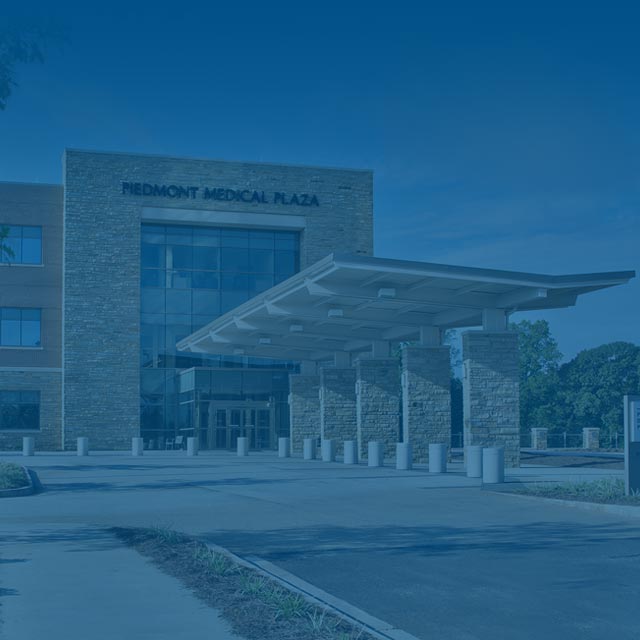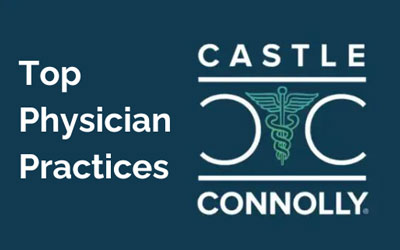Pancreatic Cancer
General Information About Pancreatic Cancer
Key Points for This Section
- Pancreatic cancer is a disease in which malignant (cancer) cells form in the tissues of the pancreas.
- Smoking and health history can affect the risk of developing pancreatic cancer.
- Possible signs of pancreatic cancer include jaundice, pain, and weight loss.
- Pancreatic cancer is difficult to detect (find) and diagnose early.
- Tests that examine the pancreas are used to detect (find), diagnose, and stage pancreatic cancer.
- Certain factors affect prognosis (chance of recovery) and treatment options.
Pancreatic cancer is a disease in which malignant (cancer) cells form in the tissues of the pancreas.
The pancreas is a gland about 6 inches long that is shaped like a thin pear lying on its side. The wider end of the pancreas is called the head, the middle section is called the body, and the narrow end is called the tail. The pancreas lies behind the stomach and in front of the spine.
The pancreas has two main jobs in the body:
- To produce juices that help digest (break down) food.
- To produce hormones, such as insulin and glucagon, that help control blood sugar levels. Both of these hormones help the body use and store the energy it gets from food.
The digestive juices are produced by exocrine pancreas cells and the hormones are produced by endocrine pancreas cells. About 95% of pancreatic cancers begin in exocrine cells.
This summary provides information on exocrine pancreatic cancer. Refer to the PDQ summary on Islet Cell Tumors (Endocrine Pancreas) Treatment for information on endocrine pancreatic cancer.
Smoking and health history can affect the risk of developing pancreatic cancer.
Anything that increases your risk of getting a disease is called a risk factor. Having a risk factor does not mean that you will get cancer; not having risk factors doesn’t mean that you will not get cancer. People who think they may be at risk should discuss this with their doctor. Risk factors for pancreatic cancer include the following:
- Smoking.
- Long-standing diabetes.
- Chronic pancreatitis.
- Certain hereditary conditions, such as hereditary pancreatitis, multiple endocrine neoplasia type 1 syndrome, hereditary nonpolyposis colon cancer (HNPCC; Lynch syndrome), von Hippel-Lindau syndrome, ataxia-telangiectasia, and the familial atypical multiple mole melanoma syndrome (FAMMM).
Possible signs of pancreatic cancer include jaundice, pain, and weight loss.
These and other symptoms may be caused by pancreatic cancer. Other conditions may cause the same symptoms. A doctor should be consulted if any of the following problems occur:
- Jaundice (yellowing of the skin and whites of the eyes).
- Pain in the upper or middle abdomen and back.
- Weight loss for no known reason.
- Loss of appetite.
- Fatigue.
Pancreatic cancer is difficult to detect (find) and diagnose early.
Pancreatic cancer is difficult to detect and diagnose for the following reasons:
- There aren’t any noticeable signs or symptoms in the early stages of pancreatic cancer.
- The signs of pancreatic cancer, when present, are like the signs of many other illnesses.
- The pancreas is hidden behind other organs such as the stomach, small intestine, liver, gallbladder, spleen, and bile ducts.
Tests that examine the pancreas are used to detect (find), diagnose, and stage pancreatic cancer.
Pancreatic cancer is usually diagnosed with tests and procedures that produce pictures of the pancreas and the area around it. The process used to find out if cancer cells have spread within and around the pancreas is called staging. Tests and procedures to detect, diagnose, and stage pancreatic cancer are usually done at the same time. In order to plan treatment, it is important to know the stage of the disease and whether or not the pancreatic cancer can be removed by surgery. The following tests and procedures may be used:
- Physical exam and history: An exam of the body to check general signs of health, including checking for signs of disease, such as lumps or anything else that seems unusual. A history of the patient’s health habits and past illnesses and treatments will also be taken.
- Chest x-ray: An x-ray of the organs and bones inside the chest. An x-ray is a type of energy beam that can go through the body and onto film, making a picture of areas inside the body.
- CT scan (CAT scan): A procedure that makes a series of detailed pictures of areas inside the body, taken from different angles. The pictures are made by a computer linked to an x-ray machine. A dye may be injected into a vein or swallowed to help the organs or tissues show up more clearly. This procedure is also called computed tomography, computerized tomography, or computerized axial tomography. A spiral or helical CT scan makes a series of very detailed pictures of areas inside the body using an x-ray machine that scans the body in a spiral path.
- MRI (magnetic resonance imaging): A procedure that uses a magnet, radio waves, and a computer to make a series of detailed pictures of areas inside the body. This procedure is also called nuclear magnetic resonance imaging (NMRI).
- PET scan (positron emission tomography scan): A procedure to find malignant tumor cells in the body. A small amount of radionuclide glucose (sugar) is injected into a vein. The PET scanner rotates around the body and makes a picture of where glucose is being used in the body. Malignant tumor cells show up brighter in the picture because they are more active and take up more glucose than normal cells do.
- Endoscopic ultrasound (EUS): A procedure in which an endoscope is inserted into the body, usually through the mouth or rectum. An endoscope is a thin, tube-like instrument with a light and a lens for viewing. A probe at the end of the endoscope is used to bounce high-energy sound waves (ultrasound) off internal tissues or organs and make echoes. The echoes form a picture of body tissues called a sonogram. This procedure is also called endosonography.
- Laparoscopy: A surgical procedure to look at the organs inside the abdomen to check for signs of disease. Small incisions (cuts) are made in the wall of the abdomen and a laparoscope (a thin, lighted tube) is inserted into one of the incisions. Other instruments may be inserted through the same or other incisions to perform procedures such as removing organs or taking tissue samples for biopsy.
- Endoscopic retrograde cholangiopancreatography (ERCP): A procedure used to x-ray the ducts (tubes) that carry bile from the liver to the gallbladder and from the gallbladder to the small intestine. Sometimes pancreatic cancer causes these ducts to narrow and block or slow the flow of bile, causing jaundice. An endoscope (a thin, lighted tube) is passed through the mouth, esophagus, and stomach into the first part of the small intestine. A catheter (a smaller tube) is then inserted through the endoscope into the pancreatic ducts. A dye is injected through the catheter into the ducts and an x-ray is taken. If the ducts are blocked by a tumor, a fine tube may be inserted into the duct to unblock it. This tube (or stent) may be left in place to keep the duct open. Tissue samples may also be taken.
- Percutaneous transhepatic cholangiography (PTC): A procedure used to x-ray the liver and bile ducts. A thin needle is inserted through the skin below the ribs and into the liver. Dye is injected into the liver or bile ducts and an x-ray is taken. If a blockage is found, a thin, flexible tube called a stent is sometimes left in the liver to drain bile into the small intestine or a collection bag outside the body. This test is done only if ERCP cannot be done.
- Biopsy: The removal of cells or tissues so they can be viewed under a microscope by a pathologist to check for signs of cancer. There are several ways to do a biopsy for pancreatic cancer. A fine needle may be inserted into the pancreas during an x-ray or ultrasound to remove cells. Tissue may also be removed during a laparoscopy (a surgical incision made in the wall of the abdomen).
Certain factors affect prognosis (chance of recovery) and treatment options.
The prognosis (chance of recovery) and treatment options depend on the following:
- Whether or not the tumor can be removed by surgery.
- The stage of the cancer (the size of the tumor and whether the cancer has spread outside the pancreas to nearby tissues or lymph nodes or to other places in the body).
- The patient’s general health.
- Whether the cancer has just been diagnosed or has recurred (come back).
Pancreatic cancer can be controlled only if it is found before it has spread, when it can be removed by surgery. If the cancer has spread, palliative treatment can improve the patient's quality of life by controlling the symptoms and complications of this disease.
Stages of Pancreatic Cancer
Key Points for This Section
- Tests and procedures to stage pancreatic cancer are usually done at the same time as diagnosis.
- There are three ways that cancer spreads in the body.
- The following stages are used for pancreatic cancer:
- Stage 0 (Carcinoma in Situ)
- Stage I
- Stage II
- Stage III
- Stage IV
Tests and procedures to stage pancreatic cancer are usually done at the same time as diagnosis.
There are three ways that cancer spreads in the body.
The three ways that cancer spreads in the body are:
- Through tissue. Cancer invades the surrounding normal tissue.
- Through the lymph system. Cancer invades the lymph system and travels through the lymph vessels to other places in the body.
- Through the blood. Cancer invades the veins and capillaries and travels through the blood to other places in the body.
When cancer cells break away from the primary (original) tumor and travel through the lymph or blood to other places in the body, another (secondary) tumor may form. This process is called metastasis. The secondary (metastatic) tumor is the same type of cancer as the primary tumor. For example, if breast cancer spreads to the bones, the cancer cells in the bones are actually breast cancer cells. The disease is metastatic breast cancer, not bone cancer.
The following stages are used for pancreatic cancer:
Stage 0 (Carcinoma in Situ)
In stage 0, abnormal cells are found in the lining of the pancreas. These abnormal cells may become cancer and spread into nearby normal tissue. Stage 0 is also called carcinoma in situ.
Stage I
In stage I, cancer has formed and is found in the pancreas only. Stage I is divided into stage IA and stage IB, based on the size of the tumor.
- Stage IA: The tumor is 2 centimeters or smaller.
- Stage IB: The tumor is larger than 2 centimeters.
Stage II
In stage II, cancer may have spread to nearby tissue and organs, and may have spread to lymph nodes near the pancreas. Stage II is divided into stage IIA and stage IIB, based on where the cancer has spread.
- Stage IIA: Cancer has spread to nearby tissue and organs but has not spread to nearby lymph nodes.
- Stage IIB: Cancer has spread to nearby lymph nodes and may have spread to nearby tissue and organs.
Stage III
In stage III, cancer has spread to the major blood vessels near the pancreas and may have spread to nearby lymph nodes.
Stage IV
In stage IV, cancer may be of any size and has spread to distant organs, such as the liver, lung, and peritoneal cavity. It may have also spread to organs and tissues near the pancreas or to lymph nodes.
Recurrent Pancreatic Cancer
Recurrent pancreatic cancer is cancer that has recurred (come back) after it has been treated. The cancer may come back in the pancreas or in other parts of the body.
Treatment Option Overview
Key Points for This Section
- There are different types of treatment for patients with pancreatic cancer.
- Three types of standard treatment are used:
- Surgery
- Radiation therapy
- Chemotherapy
- There are treatments for pain caused by pancreatic cancer.
- Patients with pancreatic cancer have special nutritional needs.
- New types of treatment are being tested in clinical trials.
- Biologic therapy
- Patients may want to think about taking part in a clinical trial.
- Patients can enter clinical trials before, during, or after starting their cancer treatment.
- Follow-up tests may be needed
There are different types of treatment for patients with pancreatic cancer.
Different types of treatment are available for patients with pancreatic cancer. Some treatments are standard (the currently used treatment), and some are being tested in clinical trials. A treatment clinical trial is a research study meant to help improve current treatments or obtain information on new treatments for patients with cancer. When clinical trials show that a new treatment is better than the standard treatment, the new treatment may become the standard treatment. Patients may want to think about taking part in a clinical trial. Some clinical trials are open only to patients who have not started treatment.
Three types of standard treatment are used:
Surgery
One of the following types of surgery may be used to take out the tumor:
- Whipple procedure: A surgical procedure in which the head of the pancreas, the gallbladder, part of the stomach, part of the small intestine, and the bile duct are removed. Enough of the pancreas is left to produce digestive juices and insulin.
- Total pancreatectomy: This operation removes the whole pancreas, part of the stomach, part of the small intestine, the common bile duct, the gallbladder, the spleen, and nearby lymph nodes.
- Distal pancreatectomy: The body and the tail of the pancreas and usually the spleen are removed.
If the cancer has spread and cannot be removed, the following types of palliative surgery may be done to relieve symptoms:
- Surgical biliary bypass: If cancer is blocking the small intestine and bile is building up in the gallbladder, a biliary bypass may be done. During this operation, the doctor will cut the gallbladder or bile duct and sew it to the small intestine to create a new pathway around the blocked area.
- Endoscopic stent placement: If the tumor is blocking the bile duct, surgery may be done to put in a stent (a thin tube) to drain bile that has built up in the area. The doctor may place the stent through a catheter that drains to the outside of the body or the stent may go around the blocked area and drain the bile into the small intestine.
- Gastric bypass: If the tumor is blocking the flow of food from the stomach, the stomach may be sewn directly to the small intestine so the patient can continue to eat normally.
Radiation therapy
Radiation therapy is a cancer treatment that uses high-energy x-rays or other types of radiation to kill cancer cells or keep them from growing. There are two types of radiation therapy. External radiation therapy uses a machine outside the body to send radiation toward the cancer. Internal radiation therapy uses a radioactive substance sealed in needles, seeds, wires, or catheters that are placed directly into or near the cancer. The way the radiation therapy is given depends on the type and stage of the cancer being treated.
Chemotherapy
Chemotherapy is a cancer treatment that uses drugs to stop the growth of cancer cells, either by killing the cells or by stopping them from dividing. When chemotherapy is taken by mouth or injected into a vein or muscle, the drugs enter the bloodstream and can reach cancer cells throughout the body (systemic chemotherapy). When chemotherapy is placed directly into the cerebrospinal fluid, an organ, or a body cavity such as the abdomen, the drugs mainly affect cancer cells in those areas (regional chemotherapy). The way the chemotherapy is given depends on the type and stage of the cancer being treated.
See Drugs Approved for Pancreatic Cancer for more information.
There are treatments for pain caused by pancreatic cancer.
Pain can occur when the tumor presses on nerves or other organs near the pancreas. When pain medicine is not enough, there are treatments that act on nerves in the abdomen to relieve the pain. The doctor may inject medicine into the area around affected nerves or may cut the nerves to block the feeling of pain. Radiation therapy with or without chemotherapy can also help relieve pain by shrinking the tumor.
Patients with pancreatic cancer have special nutritional needs.
Surgery to remove the pancreas may interfere with the production of pancreatic enzymes that help to digest food. As a result, patients may have problems digesting food and absorbing nutrients into the body. To prevent malnutrition, the doctor may prescribe medicines that replace these enzymes.
New types of treatment are being tested in clinical trials.
This summary section describes treatments that are being studied in clinical trials. It may not mention every new treatment being studied. Information about clinical trials is available from the NCI Web site.
Biologic therapy
Biologic therapy is a treatment that uses the patient’s immune system to fight cancer. Substances made by the body or made in a laboratory are used to boost, direct, or restore the body’s natural defenses against cancer. This type of cancer treatment is also called biotherapy or immunotherapy.
Patients may want to think about taking part in a clinical trial.
For some patients, taking part in a clinical trial may be the best treatment choice. Clinical trials are part of the cancer research process. Clinical trials are done to find out if new cancer treatments are safe and effective or better than the standard treatment.
Many of today's standard treatments for cancer are based on earlier clinical trials. Patients who take part in a clinical trial may receive the standard treatment or be among the first to receive a new treatment.
Patients who take part in clinical trials also help improve the way cancer will be treated in the future. Even when clinical trials do not lead to effective new treatments, they often answer important questions and help move research forward.
Patients can enter clinical trials before, during, or after starting their cancer treatment.
Some clinical trials only include patients who have not yet received treatment. Other trials test treatments for patients whose cancer has not gotten better. There are also clinical trials that test new ways to stop cancer from recurring (coming back) or reduce the side effects of cancer treatment.
Clinical trials are taking place in many parts of the country. See the Treatment Options section that follows for links to current treatment clinical trials. These have been retrieved from NCI's listing of clinical trials.
Follow-up tests may be needed
Some of the tests that were done to diagnose the cancer or to find out the stage of the cancer may be repeated. Some tests will be repeated in order to see how well the treatment is working. Decisions about whether to continue, change, or stop treatment may be based on the results of these tests. This is sometimes called re-staging.
Some of the tests will continue to be done from time to time after treatment has ended. The results of these tests can show if your condition has changed or if the cancer has recurred (come back). These tests are sometimes called follow-up tests or check-ups.
Treatment Options by Stage
A link to a list of current clinical trials is included for each treatment section. For some types or stages of cancer, there may not be any trials listed. Check with your doctor for clinical trials that are not listed here but may be right for you.
Stages I and II Pancreatic Cancer
Treatment of stage I and stage II pancreatic cancer may include the following:
- Surgery alone.
- Surgery with chemotherapy and radiation therapy.
- A clinical trial of surgery followed by radiation therapy with chemotherapy.
- Chemotherapy is given before, during, and after the radiation therapy.
- A clinical trial of surgery followed by chemotherapy.
Check for U.S. clinical trials from NCI's list of cancer clinical trials that are now accepting patients with stage I pancreatic cancer and stage II pancreatic cancer. For more specific results, refine the search by using other search features, such as the location of the trial, the type of treatment, or the name of the drug. General information about clinical trials is available from the NCI Web site.
Stage III Pancreatic Cancer
Treatment of stage III pancreatic cancer may include the following:
- Palliative surgery or stent placement to bypass blocked areas in ducts or the small intestine.
- Chemotherapy with gemcitabine.
- A clinical trial of new anticancer therapies together with chemotherapy or chemoradiation.
- A clinical trial of radiation therapy given during surgery or internal radiation therapy.
Check for U.S. clinical trials from NCI's list of cancer clinical trials that are now accepting patients with stage III pancreatic cancer. For more specific results, refine the search by using other search features, such as the location of the trial, the type of treatment, or the name of the drug. General information about clinical trials is available from the NCI Web site.
Stage IV Pancreatic Cancer
Treatment of stage IV pancreatic cancer may include the following:
- Chemotherapy with gemcitabine with or without erlotinib.
- Palliative treatments for pain, such as nerve blocks, and other supportive care.
- Palliative surgery or stent placement to bypass blocked areas in ducts or the small intestine.
- Clinical trials of new anticancer agents with or without chemotherapy.
Check for U.S. clinical trials from NCI's list of cancer clinical trials that are now accepting patients with stage IV pancreatic cancer. For more specific results, refine the search by using other search features, such as the location of the trial, the type of treatment, or the name of the drug. General information about clinical trials is available from the NCI Web site.
Treatment Options for Recurrent Pancreatic Cancer
Treatment of recurrent pancreatic cancer may include the following:
- Chemotherapy.
- Palliative surgery or stent placement to bypass blocked areas in ducts or the small intestine.
- Palliative radiation therapy.
- Other palliative medical care to reduce symptoms, such as nerve blocks to relieve pain.
- Clinical trials of chemotherapy, new anticancer therapies, or biologic therapy.
Check for U.S. clinical trials from NCI's list of cancer clinical trials that are now accepting patients with recurrent pancreatic cancer. For more specific results, refine the search by using other search features, such as the location of the trial, the type of treatment, or the name of the drug. General information about clinical trials is available from the NCI Web site.
To Learn More About Pancreatic Cancer
For more information from the National Cancer Institute about pancreatic cancer, see the following:
- Pancreatic Cancer Home Page
- What You Need to Know About™ Cancer of the Pancreas
- Drugs Approved for Pancreatic Cancer
For general cancer information and other resources from the National Cancer Institute, see the following:
- What You Need to Know About™ Cancer
- Understanding Cancer Series: Cancer
- Cancer Staging
- Chemotherapy and You: Support for People With Cancer
- Radiation Therapy and You: Support for People With Cancer
- Coping with Cancer: Supportive and Palliative Care
- Cancer Library
- Information For Survivors/Caregivers/Advocates
For more information about Pancreatic Cancer, please visit the National Cancer Institute.
























